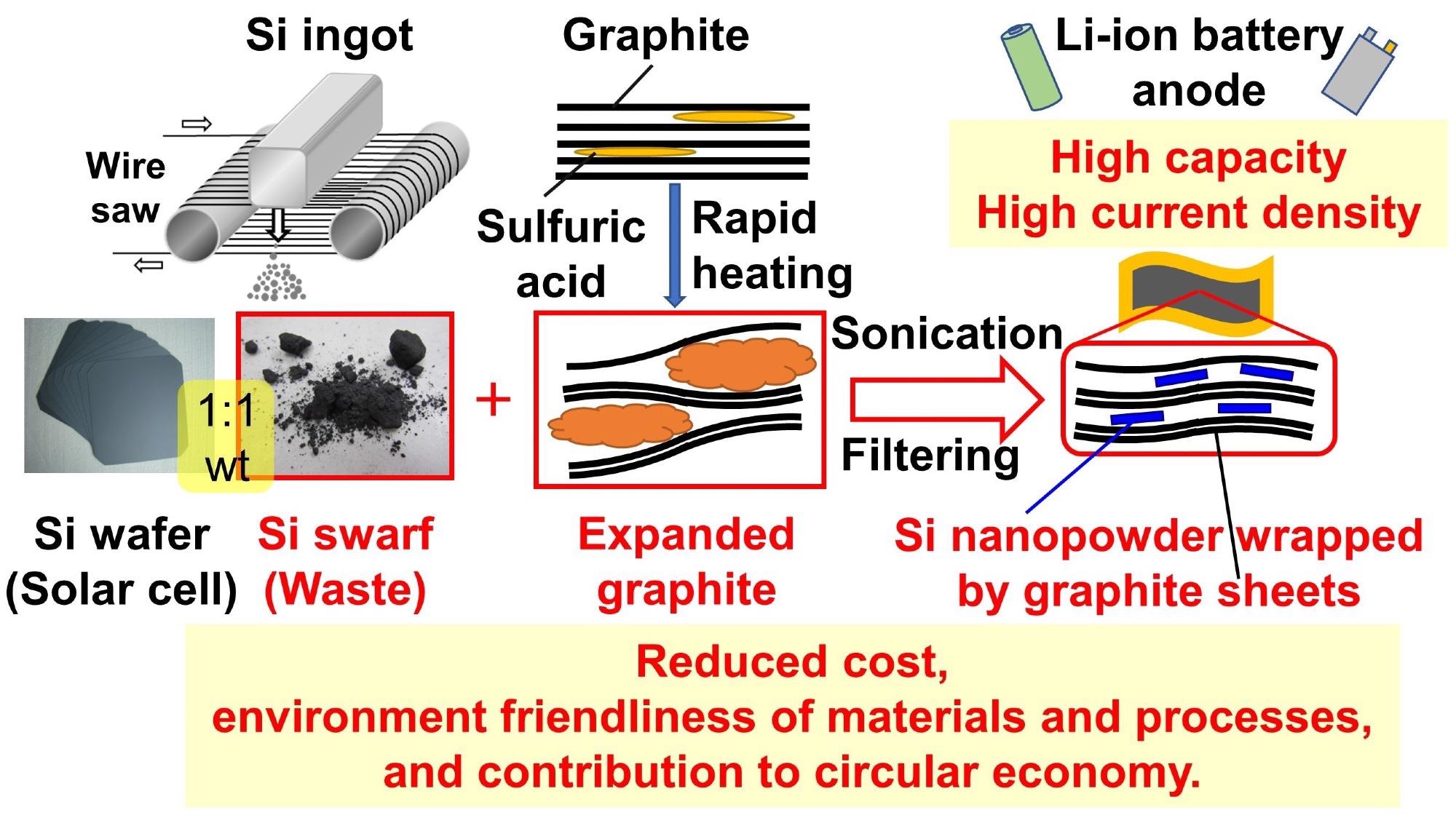Feb 9 2021
Scientists at Osaka University have created lithium-ion battery (LIB) electrodes with silicon (Si) swarf or graphite sheet composites. This helped achieve a reduction in cost, environmental friendliness, and high performance.
 Fabrication of electrode with Si swarf/graphite sheet composites. Image Credit: Osaka University.
Fabrication of electrode with Si swarf/graphite sheet composites. Image Credit: Osaka University.
LIBs have been used extensively in several mobile electronics. Issues regarding climate change and global warming have recently increased the demand for LIBs in solar photovoltaic output smoothing and electric vehicles.
Si has been examined as an active material with a high theoretical capacity of 3578 mAh/g, which is approximately 10 times higher compared to that of graphite (372 mAh/g).
Currently, a research team from Osaka University has employed flake-shaped Si nanopowder covered by ultrathin graphite sheets (GSs) to create LIB electrodes with huge current density and areal capacity.
Normally regarded as industrial waste, Si swarf is produced at a rate of 100,000 tons annually worldwide from Si ingots that are synthesized from silica via processes at 1000~1800°C.
Fixed abrasive grain wire saws and water-based coolants are opening the door to using Si swarf as an anode active material that has a high capacity at a reduced price.
Nanocarbon materials have been added to Si electrodes to enhance cyclability and electrical conductivity. Several approaches for handling the huge volume change of Si electrodes at comparatively high costs have been already been shown.
However, the Si electrodes do not exhibit all the characteristics needed for high electrode performance, in particular, environmental friendliness of materials and processes, decreased cost and circular economy.
In this study, Si/graphite sheet composites from Si swarf and expanded graphite are used as the active material with reduced cost and thermal budget. Si nanopowder is dispersed and wrapped between GSs fabricated from expanded graphite. GS bridges are formed across cracks and suppress cracking and peeling-off of Si. Agglomerated GSs wrap Si/GS composites, and work as stable frameworks that secure electrolyte paths and buffer spaces for Si volume change.
Jaeyoung Choi, Study First Author, Osaka University
The Si or GS composite structure and the delithiation limitation tend to enhance the cyclability up to 901 cycles at 1200 mAh/g.
The current density and areal delithiation capacity of the Si/GS electrodes linearly increase to 4 mAh/cm2 and 5 mA/cm2, respectively, with the mass loading for over 75 cycles, whereas thick electrodes with C-coated Si synthesized in C2H4 are not so competitive.
Si anode batteries with high capacity and high current density have the potential to be used in electric vehicles. This potential, combined with increasing generation of Si swarf as industrial waste, will allow our work to contribute to reduced greenhouse gas emissions and the achievement of SDGs.
Taketoshi Matsumoto, Study Corresponding Author, Osaka University
Journal Reference
Choi, J., et al. (2021) Si Swarf Wrapped by Graphite Sheets for Li-Ion Battery Electrodes with Improved Overvoltage and Cyclability. Journal of the Electrochemical Society. doi.org/10.1149/1945-7111/abdd7e.